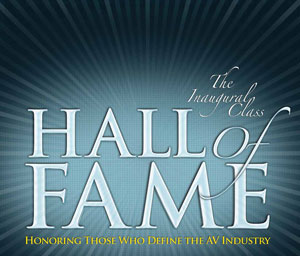The six degrees of separation gambit is fun to contemplate in this industry of ours. Most every person you meet has worked with someone else you know, or with someone else who worked with someone else you know. And if we’re going to mention celebrities, everybody has a great story about working with one member of the glitterati or another, or working with someone who worked with a member of the glitterati. The glitterati need connections with talented professionals from the audio, video, acoustics, lighting, and networking spheres. It’s enough to make Kevin Bacon jealous.
The fact is, expertise is glamorous. And glamour is infectious, which might explain the tight-knit nature of this industry. Those in the know are celebrated with a great degree of camaraderie in the AV business. Especially considering that the advantage of knowing
the brightest technical people is that you are bound to learn something from them.
Statistically speaking, the people who make up this industry are overachievers in every sense. Not only do they have the smarts to do technically demanding work, but they also generously devote hours to volunteer efforts and nurturing their families both at work and at home.
SCN celebrates these overachievers in every issue, and it seems we’ll never run out of glamorous experts for profile articles. Throughout our ongoing coverage of AV business developments, the names of some industry figures arise in our reporting again and again. These are the people with the most interlocking connections, the ones that have given their all both at work and after hours, pushing the industry forward with their efforts.
Fortunately for us, there are many, many people that are worthy of recognition, and the list just keeps on growing. This year, we launch the SCN Hall of Fame to honor those professionals who are shaping our industry through their professional and volunteer efforts. We’ll induct a new class every year, so please send us your nominations.
Start thinking about who you are connected with today and who you want to work with tomorrow. There aren’t too many degrees of separation to keep you from reaching your goals.
SCN HOF By the Numbers
SCN’s inaugural class of Hall of Fame is an eclectic group with some very impressive numbers to boot, including:
9 association leadership positions
>300 combined years in the industry
8 Founders, CEOs, and Company Partners
3 musicians
>130 years of combined marriage (mentioned)
Helène Andersen, AVI-SPL: Barrier Breaker
by Steve Harvey
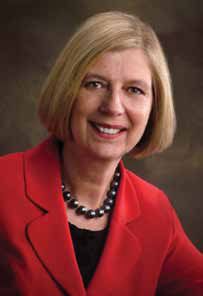
Helène Andersen, AVI-SPL
Helène Andersen, general manager at AVI -SPL , has chalked up many notable achievements during a career in the AV integration business that stretches back to the early 1970s, when she was first appointed to an upper management position in what was, let’s be frank, a man’s world. Born in Norway and a longtime Boston, MA resident. Andersen was looking for work when she chanced upon the AV industry and took a position with Boston-based integrator and dealer GBC Closed Circuit Television. “I was basically what was at the time called a ‘girl Friday,’ which was really like an office manager,” she said.
Having gotten its cameras onto the GSA schedule, GBC asked Andersen to set up an office in Washington, DC. But having recently met the man who would become her husband of 35 years and counting, Andersen arranged a threemonth trial period during which she commuted. “At the time I was the only woman on the commuter plane other than the stewardess,” she recalled. “When I look back now, I think how amazing, how different it was, and how all of us, and women in particular, have come a long way in breaking down some of these stereotypes.”
Before the 90 days were up, Andersen was recalled to Boston to replace the departing general manager. “I think at the time I was 24 or 25; I find it amazing now.”
While at GBC she got involved with a nonprofit organization that her husband still runs, HOME (she still sits on the board), introducing multimedia technology to inner city kids.
In early 1979, Andersen took a job at Crimson Camera Technical Sales, which later became Crimson Tech. After helping set up the merger and subsequent creation of Univisions Crimson Group, Andersen worked briefly for another local integrator, Adtech Systems, before receiving a call in 2007 from Marty Schaffel, chairman of Audio Visual Innovations (AVI ), asking her to open a Boston office.
Along the way, Andersen became involved with various industry organizations and served on dealer advisory boards for manufacturers. During her work with PSNI she established a print catalog that became an industry reference. “Helène Andersen is a remarkable leader in the AV industry,” said Randal A. Lemke, Ph.D., Executive Director and CEO of InfoComm International. “Her business acumen has helped build AVI -SPL , and her commitment to the larger industry as a board member of InfoComm and PSNI has greatly enhanced the industry.”
As for her induction into SCN’s inaugural Hall of Fame, Andersen commented: “The industry has welcomed me while also providing challenges and growth. Additionally, I am pleased to see the changes and the diversity of talent that is becoming part of our industry.”
Mackey Barron, HB Communications: Barron-esque
by Carolyn Heinze
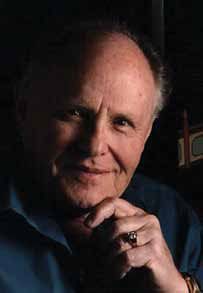
Mackey Barron, HB Communications
At his 90th birthday party in February 2010, Mackey Barron noted that his mother had made it to 98. His goal? To break that record.
In many ways, the founder of the North Haven, Connecticut-based HB Communications has already broken a number of records, contributing to the advancement of the AV industry every step of the way. And these contributions didn’t begin in 1946, when—along with his partner, Don Hawthorne—he founded the first version of his company, HB Motion Picture Service. Back in high school, Barron ran the movie projectors used to run educational films, and he applied this experience while serving in the Air Force during World War II as an efficient means of training the troops. While flying as a Second Lieutenant, he was captured and placed in a POW camp housing 10,000 soldiers, and once again, he turned to AV: to boost morale, he would screen movies for his fellow prisoners, sometimes as many as eight a day, to audiences of 1,200.
As CEO of HB Communications, Mackey’s son, Dana Barron, respects his father’s ability to combine an extreme work ethic with a level of personal engagement that made the businesspeople he dealt with want to be around him. “All the partners that he engaged with, including vendors, as well as customers, felt very comfortable approaching him, interacting with him and negotiating with him,” Dana Barron said. “He was known for always having at least one or two joke books in his desk. No matter who called, he would have a joke of the day for them.” Sometimes, people would call up simply for the jokes.
For Dana Barron, it’s these interactions that make a company successful. “If you think about when he was doing business—back in the late forties and early 1950s—these were, and are, traits that permeate good business today,” he said. Being personable and focusing on building and maintaining relationships are elements that came very naturally to Mackey throughout the course of his career, and they continue to apply to HB Communications in an age of text messaging, email and social networks. “I am actually in the business to provide technology so that you really don’t have to get out and shake hands, and travel to do that. This has its place and will be the norm, moving forward, but I still believe that it makes those handshakes, dinners, and outings even more important.”
Mackey Barron’s pioneering force in the AV industry has led to his induction in SCN’s Inaugural Hall of Fame, and Dana Barron believes that his father would be honored to be a part of it. “He would probably add that there were others like him that have been in this industry for quite some time, and that would deserve this recognition, too,” he said, adding that Mackey would be thrilled that a Hall of Fame for this industry exists. “If you think of the technology and how it’s evolved and the important role that the technologies that we deploy each and every day play in the role of education and productivity, it has a significant impact on the world.”
Steve Emspak, Shen Milsom & Wilke: The Humble Realist
by Chuck Ansbacher
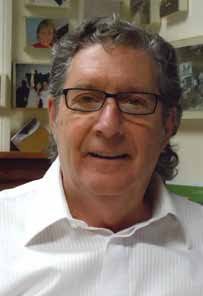
Steve Emspak, Shen Milsom & Wilke
“I don’t know a whole lot. I ’m not a highly intelligent person. But I ’m surrounded by a lot of really smart folks. I ’ve been really lucky ever since I got into the professional audio industr y in 1970.”
When you’ve been in a single industry—any industry—for 40 years, chances are you know at least something. But when you’ve risen to the top ranks of Shen Milsom & Wilke, one of the largest acoustics, audiovisual and telecommunications consulting firms in the world, your credentials have the tendency to broadcast your knowledge for you. That may be one of the reasons Steve Emspak is so comfortable being humble. Another may be that having had such a sprawling career, he’s grown tired of tooting his own horn.
As a child, the spark that initially attracted Emspak to AV was, literally, a spark. “I remember a loudspeaker with a transformer on it, and for some reason I thought I wanted to plug that into a wall… so I did.” From then on, audio, video, and electronics continued to attract him.
Beginning his career at GLI , a disco equipment manufacturer in New York City, he ran the restaurant pre-fab disco systems and later the roller disco sound system side of the business. “Steve was one of the few characters at GLI that had a sense of reality,” said GLI founder Mike Klasco. “I had no direct personal contact with reality back then, and sometimes Steve would page me over the factory sound system… ‘Earth to Mike. Earth to Mike.’” Hey, it was the ‘70s.
Now, the roller disco craze long behind us, Steve focuses on the conceptualization and team management of some of the most complex projects that come through the doors of SM&W. He’s also a member of the InfoComm and NSCA, where he holds a position on the NSCA Education Foundation Board of Directors, and most importantly, of the Drunk Unkles, a band of industry allstars he’s been playing fundraising gigs with for seven years.
“Anyone in this industry who wants to be successful needs to learn how to visualize,” he advised. “Put yourself into the space—put your own needs and desires aside, and try to understand the users’ needs and desires. It’s like a ‘beam me up, Scotty’ kind of thing. You’ve got to mentally move yourself from that comfy chair you’re sitting in to wherever that space may be.”
Jim Ford, Ford Audio-Video: The Modest Visionary
by Lindsey Adler
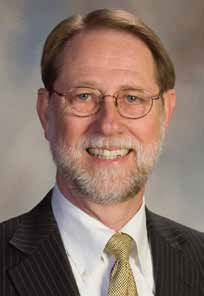
Jim Ford, Ford Audio-Video
A career in AV contracting wasn’t exactly planned from the start for Jim Ford. Like many others in the industry, Ford’s career began as a result of his interest in music, which led him to become a recording studio engineer in his earlier days and, eventually, a designer.
In 1973, along with his wife Claire, Ford founded what was first known as Ford Audio and Acoustics in Oklahoma City, OK, designing and building recording studios from the ground up, as well as renting sound systems.
Due to his early work in acoustics, Ford first became involved in a larger industrywide capacity with the Audio Engineering Society and the Acoustical Society of America. As his business expanded into video over the years, he became an active participant in NSCA and InfoComm. Ford was elected secretary treasurer of InfoComm in 2009. He went on to serve as president-elect in 2010, is currently president of the association, and will be chairman next year.
Some of Ford’s personal initiatives for the industry have been broadening the significance of InfoComm’s CTS. “Certainly with regard to standards, I have been a big supporter for the AV industry of elevating the recognition of the CTS certifications,” he said.
He views the ANSI accreditation of CTS as “a giant step for everyone in the AV industry” since it is a national standard that architects, engineers, and government can specify. “It adds credibility to our work.
“Another thing I’m a big supporter of is the creation of industry-wide ANSI standards of performance for our AV systems.”
Ford expressed a great deal of modesty about his induction to SCN’s Hall of Fame. “I don’t know that its important for me to feel honored as much as it is important that we as an industry pull together to recognize our accomplishments and achievements.”
He also said, “My wife Claire probably should be in this place before me. We work side by side and have now for 38 years.” The couple just celebrated their 41st wedding anniversary. Claire Ford is CEO and manages the business side of the firm.
Others that know Ford well give him more credit for his contributions to the industry. “Jim Ford’s contribution to our industry and our community is immeasurable: He is an astute businessman, a technology visionary, and an active and compassionate leader in the community,” said Michael MacDonald, executive vice president marketing and sales for Harman Professional. “Jim is a worthy inductee to the Hall Of Fame, and he is an example on how to couple business success with a broader mission in life. I congratulate Jim, Claire, and their family on this occasion and I have deep confidence we’ll continue to see remarkable achievements from this remarkable leader.”
Adam Karavas, Electronic Contracting: The People’s Integrator
by Lindsey Adler
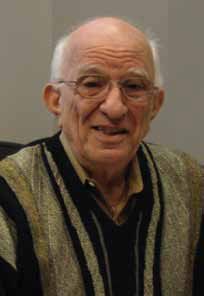
Adam Karavas, Electronic Contracting
“I’m the only president this company has ever had,” Adam Karavas said proudly.
It’s an especially noteworthy achievement considering he first started what eventually became Electronic Contracting after he graduated college in 1958—until 1978, the company was a division of High Gain Electronics, which doesn’t exist anymore.
Electronic Contracting’s early work included installing master antenna systems in apartments, which led to government work, then school intercoms, car call systems used for ordering at drive-thru restaurant windows, fire alarms, and voice evacuation systems before anyone knew what they were, he said. The company continued to morph into other activities, and today Electronic Contracting does everything low voltage except for data and telephone services.
Karavas was a member of NSCA “since the day it started,” however he’s never served on the board. He’s also been a longtime member of InfoComm. He said he’s never had much time to serve on industry boards since his business keeps him so busy, but his commitment to the associations is widely recognized. “Adam was one of the first people I truly admired in this industry when I was getting started,” said Chuck Wilson, executive director, NSCA. “He’s a mentor, a friend, and has one of the finest business minds in this industry.”
Karavas’ goal, he said, has been to increase the company’s profitability—not necessarily to be the biggest company. “My vision is to continue growing the company, and we’ve been very successful at it.”
One of the keys to Karavas’ success has been the heavy emphasis he places on personal relationships with his clients and in developing them. He said he’s very proud of “the fact that we’ve never advertised in 54 years of business because we do such an outstanding job for our clients and customers that it’s all word of mouth. We rarely lose an account. We just take care of them 24/7.”
Chris Foreman, VP /COO of Community Professional Loudspeakers, worked with Karavas as Electronic Contracting’s VP of marketing for about seven years. “One of the things he taught me is that the whole business is focused on relationships,” Foreman said.
But above all, Foreman said, “his biggest contributions have been showing everybody what it takes to be successful.”
To Karavas, his biggest accomplishment is his 54-year marriage. He’s also incredibly proud of his two sons and two grandchildren, the oldest of which, also named Adam, was recently accepted at Oxford. He enjoys watching them play hockey, and he’s been an avid tennis player for almost 60 years.
Andy Musci, Altel: A Familiar Name
by Kirsten Nelson
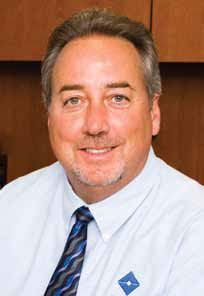
Andy Musci, Altel
In the days leading up to a trade show or industry event, as all the industry players start to arrive, it often seems that people are talking about Andy Musci. Whether his flight has been delayed due to weather or if he was the first person someone saw earlier that day, for one reason or other he’s the topic of conversation.
It seems appropriate that the AV industry is often thinking of Musci first, because he is often thinking about the industry first. “Andy starts each NSCA board meeting by asking what’s best for this industry,” observed Chuck Wilson, executive director of NSCA. “He always puts the best interest of the industry first, then states, ‘Now with my contractor hat on what do our members need from us?’ And he has done this consistently for 14 years without missing a single meeting.”
Musci himself, being the kind of likable guy that he is, would probably make a self-deprecating remark in response to any compliment sent his way. Naturally, after hearing that he had been inducted into the SCN Hall of Fame, that is exactly what he did. “It’s certainly an honor,” he said, “I don’t consider myself a Hall of Famer by any means, but I’ve been involved in this industry for my whole career, so I certainly enjoy it, and I appreciate that I’ve been able to give something back through my involvement with NSCA and InfoComm. I’ve made such a good living, I think it’s incumbent on anybody who gets something to give something back.”
Like many in the AV industry, Musci’s start in the business has family roots. His father and a business partner bought Altel in 1972 when the previous owner retired. In high school and part of college, Musci worked part-time installing speakers and pulling wire. Eventually he began working full-time, working his way up through Altel’s ranks by day while earning a college degree at night.
Later, when Musci strayed from the family business, he didn’t stray far. A two-year stint at Bogen as a product line sales manager led to three years at Atlas Sound during the years when the New Jersey-based manufacturer was merging with Missouri’s Soundolier.
It’s with knowledge of every step of the AV installation, sales, and manufacturing business that Musci now guides Altel as president and CEO. That the company has been profitable every year he has been there is again what Musci sees as others’ achievement. “One of the key ingredients to our success and longevity has always been our employees.”
While the AV business is like a family, Musci also points out how his own two sons have taught him much about seeing the true potential in people, especially young people. Fortunately for all of us in the family, Musci plans to stay involved in the industry for many years to come, even after the day he might eventually retire from Altel: “I hope that I can maintain a high standard of doing business, and that I can continue to be recognized as someone who’s done something not just for themselves, their family, and their employees, but the industry as whole, because the industry certainly helped me.”
Will Parry, AVI-SPL: Maverick Musician
by Steve Harvey
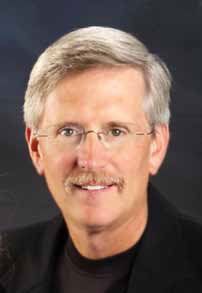
Will Parry, AVI-SPL
William “Will” Parry, vice president of sales, AVI -SPL , is a man who enjoys his work, especially when his clients share his passion for audiovisual systems. A former musician who entered the audio business in 1973, Parry retired in 2002, only to be lured back by the prospect of working in a business that he obviously loves alongside some of the people who have been with him for much of his career.
In 1973, while working with some local bands in Syracuse, NY after graduating college, Parry was asked by some friends with a booking agency, All American Talent (the company is still in business), to start a sound company. “From 1973 to ’78 I was the chief cook and bottle washer at All American Sound. I did sound, lights, and monitors, and drove the truck.”
When Parry got married in 1978 he came off the road and went to work for Maryland Sound Industries (MSI), where he was general manager for 14 years, overseeing the company’s expansion into overseas sales then the construction business.
In 1992, Parry and MSI colleagues Chad Gillenwater and Fred Curdts left to found SPL in Columbia, MD . In 1998, SPL convinced PRG (Production Resources Group), which was buying up lighting companies, that they also needed a sound company.
Parry retired in 2002 and moved to Florida. “I spent two and a half years working with my daughter, who was in real estate, riding the crest of the wave as it crashed onto the beach. It was an interesting experience.”
After about four years in Florida, Parry received a call from Phil DaPaula, one of the original SPL partners, inviting him back to the company. “I’ve been here ever since, working on special projects and doing sales.” He’s happy to be back: “It’s more of the same for a larger company with the same group of people, which makes it extremely satisfying.”
When SPL merged with AVI in 2008, the corporate office moved to Tampa, FL and SPL ’s Columbia office was renamed the Special Projects Group.
“It has been my great pleasure to work in an industry filled with talented people who are committed to their craft. From the live sound touring business to contracting, the commitment has always been there to do the best for our clients and to ‘always leave them smiling.’ I am humbled to have worked with such wonderful people all these years.”
The industry seconds that notion. “Will has been an excellent partner to work with for more than 20 years now,” said Kenton Forsyth, founder and vice president strategic product development for EAW. “He has a rare combination of professionalism, creativity and a systematic approach to problem solving. We look forward to continued good work together.”
Robert Simpson, Electrosonic: Founding Father
by Chuck Ansbacher
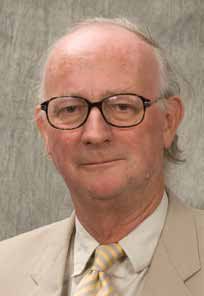
Robert Simpson, Electrosonic
When Robert Simpson first discovered an interest for lighting and sound while at school in the late ‘50s, there was no AV industry to speak of. In fact, the only possibility to work in anything closely resembling what we now call AV arose when he had a chance to do lighting and sound for college dances.
In 1964, when Robert cofounded the now legendary Electrosonic, that void was filled, and an industry was born. “It can be said that we started the ‘systems business,’ with every job being custom engineered,” he boasted, understandably filled with pride having established one of the founding members of the modern AV industry.
While Electrosonic initially cut its teeth in the lighting control business as one of the first companies to introduce practical scene-setting to architectural lighting control, Simpson quickly saw the first shoots of modern audiovisual beginning to emerge when the Kodak Carousel was introduced. “A number of companies quite independendly came up with the idea of the ‘electronic dissolve unit,’” he explained. “This was a modern take on the established ‘dissolving view’ magic lantern presentation of the 19th Century. The combination of two automatic slide projectors and a dissolve unit linked to a sound track enabled ‘film like’ presentations to be made inexpensively. What developed into the ‘multi-image’ business became the basis of Electrosonic’s AV activities, both in terms of products and of large scale systems.” The rest, as they say, is history.
Simpson’s contributions to the industry include much more than being one of its founding fathers. Being involved in EXPO ’67 in Montreal, QC, which he sees as a catalyst event in establishing new markets for AV, is a career highlight, as is doing the initial technical design and feasibility assessment for the 850 monitor videowall that Electrosonic installed in the Telecommunications Pavilion at EXPO ’92 in Seville.”
Of course, having been in the industry for over 50 years, Robert is always eager to give something back. He has written numerous books and articles on AV and lighting control topics, most notably Lighting Control – Technology and Applications, which was published in 2003, and the publication “Electrosonic World”, which he started in 1980 and has written ever since. He also participates in industry training programs like those of InfoComm.
While Robert is grateful to be honored as a founder of the industry in the SCN Hall of Fame, he knows he is only one man, supported by many. “I am more pleased that, by recognizing me as an individual, SCN is also recognizing my Electrosonic colleagues and their present achievement in maintaining Electrosonic’s reputation as an innovator in realizing and supporting AV systems.”
Scott Walker, Waveguide Consulting: The Green Trailblazer
by Lindsey Adler
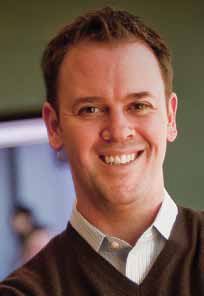
Scott Walker, Waveguide Consulting
From his days recording rock songs using environmental disasters as metaphors, it’s only too fitting that when his album sadly didn’t fly off shelves, Scott Walker settled into an AV consulting job that ultimately gave rise to InfoComm’s Sustainable Technology Environments Program (STEP).
While Walker pursued his rock career doubling as a student at Clemson, he was influenced to major in electrical engineering after building his own version of the red Fender Stratocaster he couldn’t afford. “I wanted to make something that makes sound,” he said.
Even his first job as a consultant for AV firm Cape Dixson Associates was an excuse to be in Atlanta amidst the burgeoning singer songwriter scene. And eventually, the music industry’s loss was a big gain for the AV industry.
Walker is president, CEO, and a founding principal of Waveguide Consulting. He was the first non-dealer to be elected as an officer of InfoComm and eventually as president in 2004. He went on to serve as chairman of the board as well. Among an impressive list of association involvement, he has more recently served as the first chair of the Standards Committee, the Green AV Planning Committee, the Green AV Task Force, and the AV Sustainability Task Force, which led to the development of STEP.
If his association activity is any indication, Walker’s most significant role in the AV industry has been to champion sustainability and environmental causes, and he said “without a doubt, the STEP grading system” is what he’s most proud of in his career.
“Scott Walker is a trailblazer in the AV industry,” said Randal A. Lemke, Ph.D., executive director and CEO of InfoComm International. “More than four years ago, he became the world’s first LEED AP, CTS-D.”
On being selected for SCN’s inaugural Hall of Fame class, Walker said, “I’m amazingly flattered and humbled and honored.”
He also chuckled that’s he’s being honored at his young age. “I feel like I’m just getting going,” he said.
And that’s fortunate for the rest of the AV community, many of whom he fields calls from simply sharing personal sustainability accomplishments. Middle Atlantic Products founder Bob Schluter was one of those who did so recently. Commenting on Walker’s induction, Schluter said: “Scott has always been someone I look up to for many reasons, including his passion for caring about the planet and his distinct ability to grow and run a business. His dedication to volunteering to better our industry inspired me to help others. His sensible approaches also helped shape how Middle Atlantic approached its environmental improvements. I congratulate Scott for this well deserved induction, and sincerely thank him for all his hard work that helps advance our industry.”
Jack Wrightson, WJHW: Arena Innovator
by Chuck Ansbacher
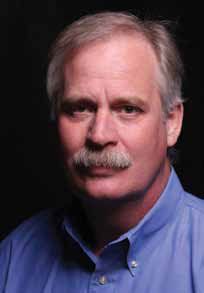
Jack Wrightson, WJHW
To the crowds in attendance at any sporting event or live music performance, the immediate focus may be the players on the field or the musicians on stage. But the all encompassing experience of the event—the technology that brings five musicians to 50,000 roaring fans; that envelops a football stadium in the boom-boom-clap of “We Will Rock You”—that is the focus of Jack Wrightson.
Or, it should be said, one of the focuses. Wrightson has been a member of the acoustics and sound system design community for two decades, dropping out of a Ph.D. program in 1982 to go into “the real world.” And while the firm that bears his name, Wrightson, Johnson, Haddon and Williams, has risen to prominence with high-profile stadium and arena projects, such as the new Dallas Cowboys Stadium in Arlington, Texas and American Airlines Arena in Miami, it’s the firm’s ability to focus on the customer that fills him with the most pride.
“Early on, when I was in the business doing design work, the emphasis was always on the hardware— not how the operator really uses it,” he said. “One of the things we’ve been able to do is get away from that, and figure out what the user need is first; how they use the technology, how they staff it, and how they run it.”
This isn’t to discount the work that WJHW has done to advance the quality of arena acoustical design. “If you have attended a major sporting event in the past two decades you likely have experienced one of Jack Wrightson’s audio or video designs,” espoused Ted Leamy, COO of Pro Media UltraSound. “He is responsible for establishing the gold-standard benchmark in modern high-performance audio systems in sports installations.”
In the early ’90s, WJHW recognized some opportunities in large amplified music spaces and did the research and technical work to convince owners they could make substantial improvements at reasonable costs. “The real significant trend started with the big arena in Nashville,” he explained. “Not having a team at the time, they were very interested in concert acoustics. They gave us the opportunity to prove that our ideas would actually work, and since then, we’ve been able to implement them in other arenas and amplified music venues.”
Judging by the caliber of projects Wrightson has been involved with since, the results continue to speak for themselves. But acoustics and sound design haven’t been the sole drivers of his accomplishments. “While everyone gets wrapped up in the glass and concrete and things that are costing many millions of dollars more than what we do, in terms of that customer—that football fan or concert goer or church goer—the entertainment technologies are much more important then they’re given credit for.”
Kevin Collins: A Positive Force
by Carolyn Heinze
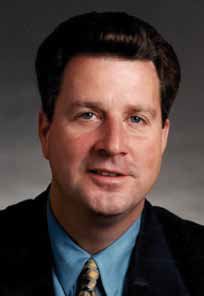
Kevin Collins
Even when he wasn’t working for the team at HB Communications, Kevin Collins always seemed to be working with them.
As a customer of the North Haven, CT-based systems integrator, Collins regularly sought the company’s expertise for the AV systems at Phillips Medical Systems. When he moved into manufacturing—first to G.E., then on to Barco—the roles were reversed, and HB proved to be a valued customer of his. Finally, in July of 1987, he joined HB’s team as a sales specialist focused in large-screen video projectors. Throughout the course of almost 25 years with the company, Collins spearheaded the development of a marketing department at HB as well as played a leading role in the construction of HB’s tech center, which handled all of the company’s installations.
When on January 26, 2011, those at HB learned that the 53-year-old Collins had passed away suddenly in his Connecticut home, the news came as a brutal shock. For them, not only was Collins a dedicated and determined professional; he was a personal friend to many at HB. “Kevin was a very engaging individual,” said Dana Barron, CEO at HB as well as a close friend. “Kevin was one of the best listeners I have ever been around. His ability to listen and truly understand the many personal and professional challenges we face in this industry made his decisionmaking and mentoring skills so powerful.
In addition to his work with HB, Collins was heavily involved with InfoComm, serving on a number of committees, including a seven-year stint on the Board of Governors. He was also a past president and chairman of the board. “His heavy involvement with InfoComm gave him the ability to bring very important discussion points back to the company,” Barron said, noting that this information proved valuable in developing strategies that helped HB as well as InfoComm.
But most significantly, it was Collins’ personality that drove he and his colleagues to bring out the best in themselves.“ He liked to be challenged and he liked to challenge others based on his competitive nature,” Barron said. “He was a good listener, but he also was very outspoken and would always drive his sales teams and reports to be better.” He adds that Collins was a good motivator, but at the same time, if someone showed less effort than expected they would hear about it. “He was a great mentor, extremely competitive and a good listener. Those traits will typically take you a long way.”
Barron believes that the development of the SCN Hall of Fame is a great way to recognize those like Collins, who have contributed not only to the advancement of their own organizations, but to the entire industry. “There are so many people who have been in the business for so long, and who have given so much and are deserving of this level of recognition,” he said. “To establish a Hall of Fame to recognize that level of contribution is a great move and one that many like Kevin Collins would find very satisfying.”
Randy Vaughan, AE Systems: The Teacher Who Loved Learning
by Kirsten Nelson
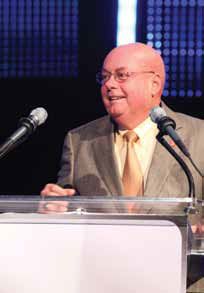
Randy Vaughan, AE Systems
True intelligence is possessed by those who never miss a learning opportunity. For these wise people, any business transaction, conversation, or new friendship could hold the key to greater understanding. This was the modus operandi of Randy Vaughan, founder of AE Systems and a lifelong supporter and friend to many in the AV industry and beyond.
Randy’s passing last December prompted a flood of remembrances that all seemed to have a common thread—teaching, learning, and crazy socks. Just as his creativity and zest for life were exhibited by a spark of color at ankle height, Vaughan was a bright presence in all of our lives. He was continually open to new ideas, whether he was chatting with someone during a break between conference sessions or sharing insights with a room full of students.
“He just loved learning,” said Mary Vaughan, who shared Randy’s life from the moment they met in eighth grade science class.
Randy founded Ambassador Enterprises while still in college, booking bands for local events. After graduation, he took the business back to Virginia, where poor sound quality in clubs persuaded he and Mary to open a music retail store with another partner, and the business eventually evolved into a pro sound installation company.
From the start, Randy took every audio class available, including the first SynAudCon cource. But he didn’t just receive knowledge, he shared it with others. Randy later was an assistant instructor with SynAudCon, and he was also a charter member of NSCA, serving on the NSCA Board of Directors from 1997- 2008, including a two-year term as president beginning in 2005. Additionally, he had just been elected chairman of the CEDI A board shortly before his death.
Randy was also proud to have built a business that grew over 40 years that supported and was supported by his family, and which they were able to sell in 2008. “I think we all know how much Randy meant to our industry and what a fine person he was,” said Chuck Wilson, executive director of NSCA. “What I’ve had the privilege to experience is getting to know his family better, and now it occurs to me that his greatest accomplishment is them.”
There’s a lot to remember about Randy, and so we induct him into the SCN Hall of Fame knowing that he would have worn the best socks for the occasion. “Funny how everyone’s gone crazy about his socks, it’s really about no socks,” Mary said, pointing out that Randy always worked with one goal in mind, and that was to spend time on the water with his family. Socks were anathema to this pastime, so much so that the yacht club to which the family belonged held an annual sock burning each spring. “Really, I would have to check if he had socks if were going someplace where we had to dress up, because he tried to sneak it through.”
